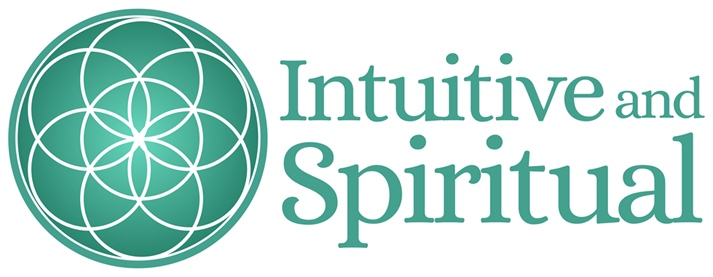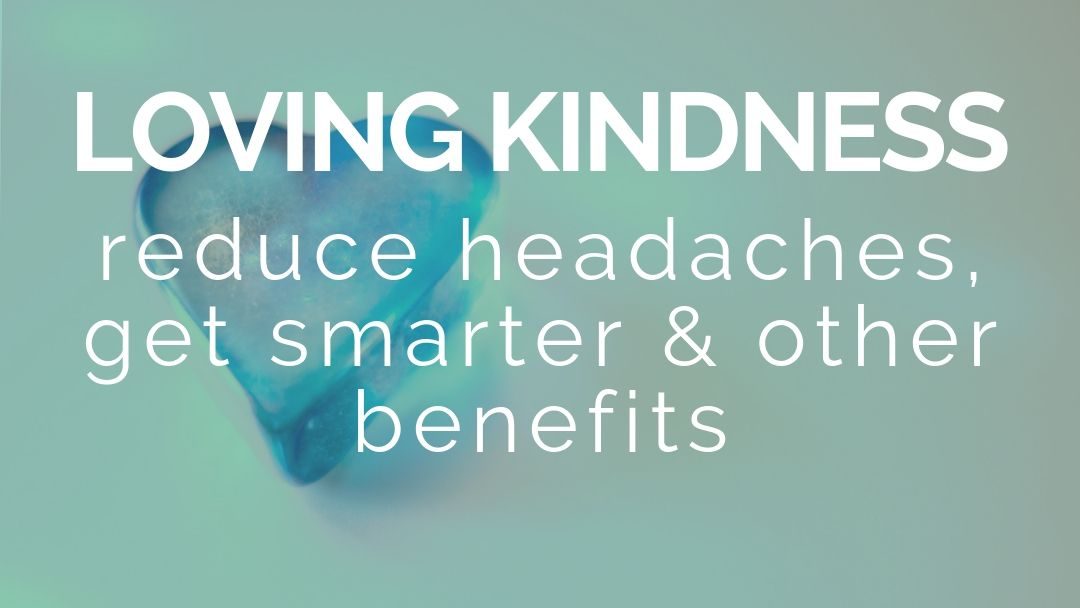Loving Kindness Meditation
Loving Kindness is one of my favorite types of meditation and I personally do it often. I always emerge with a feeling of love. I’ve been meaning to create this guided meditation for awhile: my friend Maria over at Marcoujor had requested it and I’d been waiting for an opportunity to create it.
Loving Kindness Meditation (LKM) involves “universal love” – something magical happens to your heart when you do this type of meditation.
This meditation works. It has helped me change relationships with difficult coworkers, with members of my family, and more. I feel more loving and more receptive to their points of view, even if I don’t necessarily agree.
To that end, I wanted to share a bit of the history and a few of the benefits of doing LKM. I created a Loving Kindness Guided Meditation as well, should you want to try it (see script/video in this post).
Metta Meditation – Where did it come from and what does it mean?
Loving Kindness has its roots in the Buddhist tradition, but it can be practiced as a secular meditation – which is what I do when I teach it to others. The word “metta” means love or kindness in the Pali language. Its translation then is “loving kindness” in English. People familiar with the practice also call it “metta meditation.”
This type of meditation does not focus on the breath, but rather, you concentrate on specific elements of love and kindness toward yourself and others. Because of this, it invokes every human’s capacity for self-love and empathy. Sometimes it can be difficult to practice LKM: the whole premise is that you send love and kindness to yourself, to those you love and to those you don’t like or who have angered you. And yet, it changes you to do so. You tap into the field of universal love. It is a powerful force.
The Buddha himself practiced this meditation as a way to develop self love, as well as altruism and goodwill toward others. In fact, Loving Kindness develops four behavioral characteristics: friendliness, joy, compassion and equanimity (or mental calmness).
Love and Kindness Meditation Benefits
Practicing metta has many benefits and some are quite surprising.
Helps with migraines and chronic pain
The list of physical benefits is impressive. Loving Kindness helps with migraine headaches. In fact, one scientific study, “Meditation-based treatment yielding immediate relief for meditation-naive migraineurs” reported a 33% drop in pain symptoms after just one Loving Kindness meditation. Because of its pain-relieving effects, LKM helps to reduce chronic pain for those who suffer from it. It seems to work especially well for those with lower back pain.
Reduces the effects of aging and physical illness
In addition, just as meditation can help slow the effects of aging, LKM also helps slow the aging process. Still, other benefits include greater volume of brain matter, especially in the pre-frontal cortex, a reduced stress response, it helps to alleviate PTSD, reduces inflammation, as well as reduces symptoms of schizophrenia.
Emotional benefits
Emotional benefits abound with LKM, as well. It helps promote healthier relationships, ease symptoms of depression, and helps you adopt a more positive thinking mindset. It increases resilience to positive and negative events, helping a person return to a stable “normal” sooner. This meditation instills a greater sense of life satisfaction as well as a greater appreciation for life itself. In addition, you become more likely to “put yourself in someone else’s shoes” and understand their perspective. In a world that seems so divided these days, this type of meditation can really help sew the seeds of peace.
Mental benefits
Due to increased brain matter, you become more focused, efficient and better-able to make decisions. With your physical ability to have a reduced stress response, you are able to think more clearly in all of life’s situations. You experience more mental clarity in general. You also experience decreased bias and attachment to things – to greed. Perhaps one of the greatest mental benefits is that you feel more self-love. Indeed, I have witnessed too many people in my time who have a lack of self-love and all I want to do is send loving kindness to them and a wish for them to practice it themselves.
This is my simple religion. There is no need for temples; no need for complicated philosophy. Our own brain, our own heart is our temple; the philosophy is kindness.’
–Dalai Lama
Before doing metta meditation
LKM generally involves stating three short statements (of course this can vary) that invoke love, compassion, empathy or kindness to oneself and to others. You can look at the script below to see which phrases I use for the guided meditation.
Some phrases you can try:
- may you feel peace
- may you feel loved
- may you be free from suffering or pain
- may you be safe
- may you experience hope
- may you let go of anger
- may you experience abundance in health
- may you be happy
- may you experience abundance in love, life and fulfillment
- may your heart be filled with love and kindness
Before beginning your meditation, it’s a good idea to choose what phrases you’ll use, and to whom you will direct the energy of your love and kindness. You will always include yourself, but then you want to include someone you love (whether it’s someone close to you, a family member or a pet), someone for whom you have neutral feelings (typically someone you’re familiar with but don’t know well enough to have any opinions on the person), someone with whom you have difficulties (such as a difficult coworker, or someone who has angered you), and then you’ll expand this love and kindness to your community, country, and the world.
A loving kindness meditation need not be long. You can make the practice longer if you’d like, but as little as 5-10 minutes a day can really give you a lot of benefit. The loving kindness practice I do in the video is about 15 minutes long. You can do it once a day, twice a day, or as often as you need.
Loving Kindness Guided Meditation
Introduction
As you begin this practice, make sure you won’t be disturbed.
You may sit in a chair with your feet flat on the floor, or on a cushion – wherever you may be comfortable. Just be sure the position you find is one that you can maintain long enough for this meditation. Be kind to yourself. If you find that you need to shift, do so with mindfulness and calm.
When you meditate, it’s okay to have thoughts – they will come! Welcome them. Meditation shouldn’t be a strain. Don’t try too hard. Just bring your gentle, nonjudgmental attention back to this meditation when you find your thoughts have taken you somewhere else.
Let go of expectations. You have come to your chair or cushion. Let yourself settle into this practice to benefit from this time of calm and silence. Once you begin this meditation, stick with it until the end.
Beginning the meditation
Close your eyes, or cap them halfway, with a soft, unfocused gaze.
Bring your awareness to the breath. Notice the rise and fall of the chest, the natural rhythm of breathing. Sit with the breath for a few moments.
If you find your thoughts wandering, gently come back to this loving kindness meditation. Thoughts are okay. Let them come. Welcome them. Gently let them go by coming back to this meditation. Be kind to yourself.
Now, take two or three deep yawns. You can “fake yawn” until one comes on.
Bring your attention back to the breath. Notice the natural rhythm of your breathing.
Breathe in, deeply, first into your belly and then into your chest. Inhale as much as you can.
Slowly begin to release the air, starting with your chest, then your belly. Do this for two more breaths.
Scan your body to relax
Bring your attention to your scalp. Mentally relax all the muscles surrounding your head. Move to your left ear and your right ear and do the same.
Bring your awareness to your forehead and relax it, followed by your eye brows, eyes, and nose.
Soften your cheeks, lips, and jaw.
Bring our attention to your throat. Relax the front and move your awareness to the back and do the same.
Now, move your awareness to your shoulders. Toward the front, relax the muscles surrounding your collarbone, and the sides where your shoulders join with your arms. Move to your back, where your shoulder blades reside. Relax and soften all the muscles in that area.
Soften the muscles that make up your upper arms, your forearms, hands, and fingers.
Relax all the muscles in your torso – those around the ribcage, the belly, lower abdomen, and now the back of your ribcage down to your lower back.
Soften the muscles around your thighs, knees, and lower legs. Move to the ankles, feet and toes.
Scan over your whole body, noticing any sensations you may have. Allow your whole being to relax into this meditation.
Think of someone close to you
Now, bring to your awareness someone close to you. This could be a partner, a friend, a family member, even a pet. You might see an image of this beautiful being, or you may think of their name. Offer this being love and kindness. Silently repeat the following phrases:
May you feel loved.
(Repeat)
May you be free from suffering.
(Repeat)
May you feel peace.
(Repeat)
Think of a neutral person
Now think of someone you have just met or do not know well. This could be someone at the grocery store, at the post office, a bank, or other such place. Offer love and kindness to this person. Silently whisper the phrases:
May you feel loved.
(Repeat)
May you be free from suffering.
(Repeat)
May you feel peace.
(Repeat)
Think of someone with whom you have difficulty
Feel this loving energy growing in your heart. Bring your awareness to a person in your life with whom you experience some difficulty. This could be a family member, a co-worker, a friend, or anyone in your life with whom you’d like to improve your relationship.
Send them love and kindness. Silently repeat the following phrases:
May you feel loved.
(Repeat)
May you be free from suffering.
(Repeat)
May you feel peace.
(Repeat)
Think of your community
With the love that is in your heart, continue to expand this beautiful energy. Think of the community in which you live, and all the Beings who live there. Send all of them love and kindness.
May you feel loved.
(Repeat)
May you be free from suffering.
(Repeat)
May you feel peace.
(Repeat)
Expand your love
Continue sending love and kindness out to the world. Think of the country in which you live. Send your love and kind energy to all its people:
May you all feel loved.
(Repeat)
May you all be free from suffering.
(Repeat)
May you all feel peace.
(Repeat)
Send love to the world
Now, send this vibrant energy to the entire world: to every Being, to every continent. Silently repeat the phrases:
May all feel loved.
(Repeat)
May all be free from suffering.
(Repeat)
May all feel peace.
(Repeat)
Practice on yourself
As your heart is full of love, and kindness, direct these thoughts toward yourself. You are an incredible Being. Silently repeat the phrases:
May I feel loved.
(Repeat)
May I be free from suffering.
(Repeat)
May I feel peace.
(Repeat)
Allow yourself to breathe in, and breathe out this love and kindness for a few moments.
Concluding the meditation
Keep your eyes closed or capped as you near the end of this meditation.
It’s important to come out of meditation slowly.
Bring your awareness back to the breath. Allow yourself to feel the in and out rhythm of the rise and fall of the breath.
On your next inhale, allow the fingers and toes to wiggle if you wish.
When you’re ready, open your eyes with a soft downward gaze. Keep your focus inward.
Open your eyes fully as you’re ready. You may return to your day.
Resources:
11 Benefits of Loving-Friendliness Mediation
Small Amounts of Loving-Kindness Meditation Lead to Big Change
The Benefits of Loving Kindness
Loving-Kindness Meditation
Psychology of Love: 7 Benefits of Loving-Kindness Meditation
Scientific Buddhist: Ten Benefits of Compassion
18 Science-backed Reasons to Try Loving-Kindness Meditation



OK, I am so trying this, especially for the fact hat summer vacation begins on Wednesday for both my girls and know I need all the help I can being more relaxed and overall healthy for the next 6-8 weeks while they are home with me. So, thanka for sharing and hoping you are havign a wonderful week so far!! Hugs xoxo <3
Sweet Janine! If you do try this, I would love to know how it goes. May you all have a happy, healthy, safe, and fun summer! I’ll bet it’s a little surreal having them back home. You going to Disney again? Hehe. Sending you big hugs! xo
Well, Lil Sis, you are playing my song.
I don’t get headaches.
I don’t have stress in my life
I am happy with myself
I love!
I personally think those things are all related. How about you? 🙂
I’ve always loved other people. i had to learn to love myself. Once that happened life became one enjoyable day after another.
And ain’t that cool?
You mentioned getting smarter? At my age I”m not sure that will happen, but we can hope. lol
Have a great week!
hugs
Big Bro –
You have those lines like a haiku there. Hehe.
Yes, you emanate lots of love, dear friend. Yours is a genuine heart and this is why, after all these years, I still love your work and the things you share. Because you are awesome!
You have a contented life and it’s inspirational to me. All that you have done and overcome – you are incredible! And you are open-minded, and for this, I am so grateful.
I’m so glad you learned to love yourself. Too many people THINK they love themselves (and pursue material gains in an effort to prove it so) when in reality, they work themselves silly, and often put themselves last. Or they don’t allow themselves to stop, think, and ponder the deeper meaning of this life. They get so caught up in keeping up with the Joneses and I’ll tell you what: those Joneses are going to make this planet uninhabitable. But I digress. This is about love.
And getting smarter. Hehe. Each day you’re alive you get smarter, my friend. We all benefit from your wisdom. And may we all benefit from the collective wisdom that comes with living life.
You have a great week also. Sending hugs from Cackalack. Yep, back home in the Appalachians, whereas – and it’s surreal – two days ago I was in the Rockies. The wonders of modern transportation. lol.
Dear Cynthia,
Sooooo cool that I started with your most current post – I know I am terribly behind in my commenting yet I was drawn to this title.
LOL, no wonder!
The timing of these grounding and meditative thoughts is perfect. I intend to share this with a group of dedicated students to assist
them in getting through one of nursing school’s many hurdles. You are an angel on Earth.
Love, peace and hugs,
Maria
Sweet Maria, I always feel so much gratitude when I see your beautiful words.. Do not ever worry about being behind in commenting. These last few weeks I have been behind, myself. Hehe. And yes, I totally had you in mind when I was writing this post. I remember you had made this request a while back and I wanted to write this when the time felt right. Something told me it was time. I hope this post helped you and your students. you, too, are a walking angel. I hope your summer is as lovely as you are. I also can’t wait to see more posts that you write. Sending you big hugs, Cynthia. xo
I immediately thought of using this with my ex husband and his spouse who I will see at my son’s wedding this weekend. Then I realized there are so many more beings I can apply this to. I’m looking forward to studying this practice more and starting it with someone close to me. Right on time!
JoAnna – I hope the wedding went well. I have been thinking of you and hoping that there was lots of love and lots of laughter. And yes, once I start doing this meditation, I feel so peaceful and so in love with everything. It’s almost like the world gets this lovely pink glow just from the surge of universal love that I feel. I am so glad the timing of this post has worked for you, as well. Sending you big hugs. xo